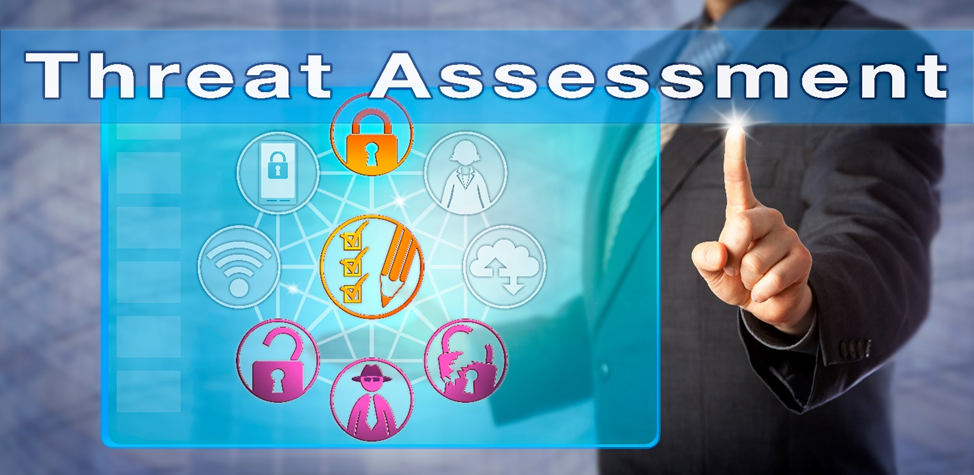Threat and Risk Assessment is the First Step in Safeguarding Your Network
—Michael Fowler
Sophisticated networks of greedy, malicious cybercriminals are proliferating around the world and across the Internet. They constantly probe corporate and government networks of all sizes, looking for vulnerabilities they can exploit to steal data, identities, and money.
Therefore, your organization must conduct a detailed and comprehensive evaluation of its network and data vulnerabilities. Assigning a team of talented cybersecurity experts to identify potential weaknesses in your systems’ defenses is known as threat and risk assessment (TRA).

What is a Threat and Risk Assessment?
Threat and risk assessment involves identifying, assessing, and correcting potential data and network vulnerabilities before malicious actors can exploit them. By determining potential security weaknesses and taking the appropriate actions to reduce their impact, TRA is critical to managing and preventing the threats presented by cyber criminals.
What is the Process?
Every organization has its own procedures for threat and risk assessment, but the typical approach generally includes the following phases:
- Phase I: Data Collection
In the Data Collection phase, the TRA team will use their unrestricted access to data and information to analyze the organization’s overall security posture and create a threat analysis. The TRA team might use intrusion incidents, detection-system logs, exploitation reports, firewall records, digital forensic analysis, and other information sources to generate their assessment. What are they looking for?
- The identity of attackers and their probable motivations;
- The vectors or exact methods of attempted intrusions;
- Measures that would strengthen the organization’s defenses against future such attacks.
- Phase II: Threat Analysis
In this phase, the TRA team tests the organization’s security tools against the information gathered in the Data Collection phase. They evaluate the probability that an attack would be successful and the consequences if it were. The team assesses the attack’s potential impact on the availability, confidentiality, and integrity of the organization’s data and processes. The types of threats the TRA team examines include:
- Phishing attacks
- Unsecured WiFi exploitation
- Threats presented by removable media (thumb drives, etc.)
- Viruses and malware known to be currently circulating
Because the nature and variety of threats presented by cybercriminals are constantly changing, the Threat Analysis phase of TRA should be repeated on a frequent and regular basis, especially when there are changes or additions to the technological or operational structure of the organization.
- Phase II: Remediation and Acceptance
Once the threat and risk assessment team has identified and reported the organization’s potential vulnerabilities, its executives must determine which vulnerabilities to remediate and which to allow to remain in their current state. Those decisions are usually based upon:
- The expense or difficulty of a remediation;
- The probability of a particular type of attack;
- And the potential of a remediation measure to disrupt the organization’s everyday operations.
Risk Management Involves the Entire Company
Cybersecurity is as much about culture as it is about technology. Many people assume that network security and data protection are the sole responsibility of the IT team. As a result, they make careless mistakes that can increase the odds that their company will be compromised.
Every member of the company has a role to play in TRA and threat reduction:
- The CEO should establish a culture of security, discussing cybersecurity with direct reports and the entire organization. Supporting the IT leaders, taking the results of their threat assessments seriously, and taking the lead in ensuring that staff members follow their recommendations will go a long way toward securing your company from attack.
- The cybersecurity team leads the threat risk assessment, thoroughly analyzing security hazards, studying threat statistics, conducting facility walk-throughs, and collating information and data from multiple sources. Based on these, they will form a comprehensive understanding of the company’s current vulnerabilities and assess its compliance with industry practices and applicable laws.
- The IT team must ensure software patches are up-to-date, perform regular testing and backups, and endeavor to minimize the amount of data stored on the organization’s premises—properly implemented cloud storage is inherently more secure for many reasons.
Threat and risk assessments collect essential cybersecurity information and expose potential weak spots in your organization’s defenses. They also explain the possible consequences of a security breach. Finally, they can help improve an organization’s security practices preventing incidents in the future. While it is impossible to avoid all cybersecurity incidents, risk assessments are vital for protecting any organization.

